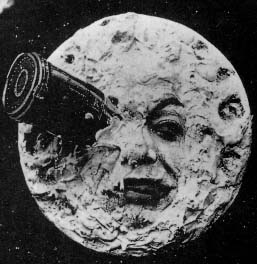By Joan Neuberger
 It’s no secret that the internet has made more images available to more people. Major libraries are digitalizing their visual collections and sites like Hulu and YouTube offer an enormous range of whole films and TV series. The quantity of visual resources is very exciting, and at the same time, daunting. Even if we only count collections of interest to historians, the sheer quantity of valuable images is increasingly hard to navigate. My goal is to point readers to interesting collections and websites (and books!) that might otherwise remain lost in the electronic thicket. And I invite readers to send in their own suggestions as well.
It’s no secret that the internet has made more images available to more people. Major libraries are digitalizing their visual collections and sites like Hulu and YouTube offer an enormous range of whole films and TV series. The quantity of visual resources is very exciting, and at the same time, daunting. Even if we only count collections of interest to historians, the sheer quantity of valuable images is increasingly hard to navigate. My goal is to point readers to interesting collections and websites (and books!) that might otherwise remain lost in the electronic thicket. And I invite readers to send in their own suggestions as well.
I want to begin by showing you a very early, full-color, Kodachrome film made by in 1922. It is a lovely little four-and-a-half minutes of pretty women gesturing for the camera. The color and lighting are exquisite, –all warm reds with flattering highlights– making it a purely enjoyable thing just to look at.
[jwplayer mediaid=”5187″]
Historically it interests me for two reasons.
For all its technical achievements, Kodak hadn’t yet done away with the flicker that gave movies one of their earliest and enduring nicknames: flicks. I was all ready to explain the flickering as the result of the slow, hand-cranked cameras that produced variations in film speed. Then I read the post about this film clip on Kodak’s blog, A Thousand Words, and discovered two alternate possibilities. As someone who loves old films (like Georges Méliès’ Journey to the Moon pictured above), and old cameras (like Mikhail Kaufman‘s below), it’s always interesting to read about the ingenuity that went into solving mechanical problems that led to technical breakthroughs.
Even more interesting are the women’s gestures. We see fluttery, innocent modesty, maternal love, and in the longest sequence, sexy, puckered-lip vamping. The women’s movements and expressions, even more than their fashionable clothes, immediately mark them as interwar female types. Recently a Russian film scholar, Oksana Bulgakowa, has shown how various feelings and meanings were coded in Soviet film actors’ movements. Some of these seem are so unfamiliar, they seem like a foreign language today. You can see what she means in her own movie on the subject, The Factory of Gestures.
Today, when we watch TV or a movie, we see a wide diversity of acting styles and behaviors. A hundred years from now, which ones will be seen as defining our age?
Photo Credits:
Screen shot from A Journey to the Moon, by Georges Méliès
Mikhail Kaufman mounting camera on a train, 1929, via Wikimedia Commons, status unknown



